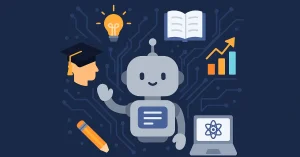Transfer learning is a powerful technique that allows us to leverage the knowledge gained from previously trained models to improve the performance of new models. By utilizing pre-trained models, we can save time and resources and achieve better results. This article will explore the basics of transfer learning, its real-world applications, and the limitations and opportunities for future advancements. Whether you are a beginner or an expert in machine learning, this article will provide valuable insights on unlocking the power of transfer learning.
The Basics of Transfer Learning
Transfer learning is a technique that allows us to utilize the knowledge gained from previously trained models to improve the performance of new models. This can be done by fine-tuning pre-trained models, using their weights as a starting point for training new models, or by using the features learned by the pre-trained model as inputs for a new model.
The main idea behind transfer learning is that the knowledge gained from one task can be transferred and applied to another. For example, a model trained to recognize objects in images can be fine-tuned to recognize specific objects in new images. This is because the features learned by the model, such as edges and textures, are general and can be applied to different tasks.
Transfer learning can be applied to different models, such as convolutional neural networks (CNNs) and recurrent neural networks (RNNs), and in various domains, such as computer vision, natural language processing, and speech recognition.
It’s important to note that transfer learning is only sometimes applicable or beneficial. It depends on the similarity between the pre-trained model and the new task, as well as the size of the new dataset. In cases where the new task is very different from the pre-trained model or the new dataset is too small, transfer learning may not be effective.
From Pre-trained Models to Better Results
Transfer learning can be applied in several ways, such as fine-tuning pre-trained models, using their weights as a starting point for training new models, or using the features learned by the pre-trained model as inputs for a new model.
Fine-tuning a pre-trained model involves training a pre-trained model on a new dataset to adapt it to the new task. This is done by freezing some or all of the layers of the pre-trained model and training the remaining layers on the new dataset. By fine-tuning a pre-trained model, we can achieve better results than training a new model from scratch, as the pre-trained model has already learned valuable features from a large dataset.
Using the weights of a pre-trained model as a starting point for training a new model is another way to apply transfer learning. This approach is called feature extraction, and it involves using the features learned by the pre-trained model as inputs for a new model. This can be done by removing the final layer of the pre-trained model, which is usually the classification layer and using the output of the last hidden layer as inputs for a new model. This approach can also achieve better results than training a new model from scratch.
Using the features learned by a pre-trained model as inputs for a new model is another way to apply transfer learning. This approach is called feature extraction, and it involves using the features learned by the pre-trained model as inputs for a new model. This can be done by removing the final layer of the pre-trained model, which is usually the classification layer and using the output of the last hidden layer as inputs for a new model. This approach can also achieve better results than training a new model from scratch.
Transfer Learning in Action: Real-world Applications
Transfer learning has been widely used in various real-world applications, such as computer vision, natural language processing, and speech recognition.
In computer vision, transfer learning has been used to improve the performance of object detection, image classification, and segmentation models. For example, pre-trained models, such as VGG, ResNet, and Inception, have been fine-tuned on new datasets to improve the accuracy of object detection and image classification tasks. In medical imaging, transfer learning has been used to train models for diagnosing diseases like cancer by fine-tuning pre-trained models on medical images.
In natural language processing, transfer learning has been used to improve the performance of text classification, sentiment analysis, and language translation models. For example, pre-trained models, such as BERT and GPT-2, have been fine-tuned on new datasets to improve the accuracy of text classification and sentiment analysis tasks.
In speech recognition, transfer learning has been used to improve the performance of speech-to-text models. For example, pre-trained models have been fine-tuned on new datasets to improve the accuracy of speech recognition tasks in different languages and accents.
These are just a few examples of how transfer learning has been applied in real-world applications. The technique is being actively researched and developed, and new applications are being discovered regularly. The main advantage of transfer learning is that it allows us to leverage the knowledge gained from previously trained models to improve the performance of new models, which can save time and resources and achieve better results.
Overcoming Limitations with Transfer Learning
Despite its many advantages, transfer learning has some limitations that need to be addressed. One limitation is the domain gap between the pre-trained model and the new task. If the new task is very different from the pre-trained model, transfer learning may not be effective. For example, a model trained on images of animals may need to be more effective in recognizing objects in satellite images. In such cases, it may be necessary to train a new model from scratch or to use domain adaptation techniques to bridge the gap between the pre-trained model and the new task.
Another limitation of transfer learning is the size of the new dataset. If the new dataset is too small, transfer learning may not be effective. This is because the pre-trained model may need to be more balanced with the new dataset, resulting in poor performance. In such cases, it may be necessary to use data augmentation techniques to increase the size of the new dataset or to use a pre-trained model that is more suited to the new dataset.
The Future of Transfer Learning: Advancements and Opportunities
Transfer learning is rapidly advancing, and new advancements and opportunities are constantly emerging. One area of research is multi-task transfer learning, which involves training a single model to perform multiple tasks simultaneously. This can be done by sharing some or all of the model’s layers across tasks or training a single model with multiple heads for different tasks. Multi-task transfer learning can improve the performance of multiple tasks by leveraging the knowledge gained from each task.
Another area of research is meta-transfer learning, which involves training a model to learn how to learn from new tasks. This can be done by training a model to adapt to new tasks quickly or by training a model to learn how to transfer knowledge from one task to another. Meta-transfer learning can improve the performance of new tasks by allowing the model to adapt to new tasks quickly.
FAQS
Q:1:What is transfer learning?
Ans: Transfer learning is a technique that allows us to utilize the knowledge gained from previously trained models to improve the performance of new models. This can be done by fine-tuning pre-trained models, using their weights as a starting point for training new models, or by using the features learned by the pre-trained model as inputs for a new model.
Q:2:How does transfer learning work?
Ans:Transfer learning works by taking a pre-trained model and fine-tuning it on a new dataset to adapt it to the new task. This can be done by freezing some or all of the layers of the pre-trained model and training the remaining layers on the new dataset. This approach can achieve better results than training a new model from scratch, as the pre-trained model has already learned valuable features from a large dataset.
Q:3:What are the advantages of transfer learning?
A:The main advantages of transfer learning are that it can save time and resources and achieve better results. By utilizing pre-trained models, we can avoid training new models from scratch, which can be time-consuming and resource-intensive. Additionally, transfer learning can improve the performance of new models by leveraging the knowledge gained from previously trained models.
Conclusion
In conclusion, transfer learning is a powerful technique that allows us to leverage the knowledge gained from previously trained models to improve the performance of new models. It can be applied to different types of models and in various domains, and it can save time and resources, as well as achieve better results. However, transfer learning has some limitations, such as the domain gap between the pre-trained model and the new task, the size of the new dataset, and the amount of labeled data available for the new task. To overcome these limitations, it may be necessary to use domain adaptation techniques, data augmentation techniques, and unsupervised or semi-supervised learning techniques.
Also read: Coin Wealth Inv Review: Learn more about the features this broker provides!





